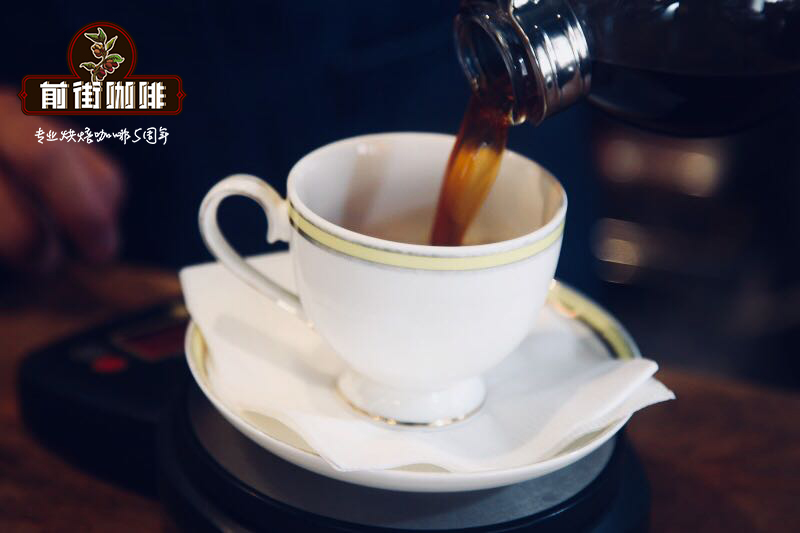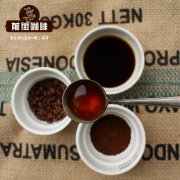Introduction to the types and tastes of coffee beans the price of coffee beans does not represent quality

Professional coffee knowledge exchange more coffee bean information please follow the coffee workshop (Wechat official account cafe_style)
Types of coffee beans:
There are more than 100 kinds of coffee in the world, but at present there are two most common coffee beans: Arabica and Robusta
There are differences in flavor, caffeine ratio and planting conditions between the two kinds of coffee, so here is a brief analysis of the differences between the two:
1. Arabica
Planting conditions: 800m-2000 m above sea level
The price is higher (it is more difficult to plant), the flavor is smooth and sweet, the caffeine content is lower.
two。 Robusta
Planting conditions: below 800 meters above sea level
Basically, the price is only half that of Arabica (low insect pests, faster results), the flavor is more bitter and the caffeine content is higher.
{the level of price does not represent quality} {the level of price does not represent quality}
Because of its relatively low price and high caffeine content, Robusta is often used to mix instant coffee for sale. Because the consumers they are facing tend to have the effect of "affordable price and relieving fatigue at the same time"
There are also many coffee advertisements that emphasize "100% use Arabica coffee beans" to imply that consumers "our coffee is of good quality."
Let's get back to the point. {the price does not represent the quality}.
High-quality robusta beans can even taste better than poor-quality Arabica beans, so you can't just look at / listen to the beans used by this store and take the coffee out of context.
At present, it is quite popular to teach coffee knowledge, and quite a lot of people participate in it. in fact, this is very optimistic for the coffee industry. after all, the popularization of coffee knowledge can make people more receptive to coffee products.
The prices of coffee courses on the market range from thousands to tens of thousands, from introductory theoretical knowledge to certificate courses, it can be seen that coffee as a foreign culture has been gradually accepted, it is really gratifying! 🎉🎉
At the same time, there are also some "coffee masters" who teach people to make coffee after learning basic theories. Take this picture as an example, entitled "A picture teaches you Arabica and Robusta." in this picture, the left is indeed Arabica (type S) and the right is Robusta. BUT! Does this criterion apply to all coffee beans? If you learn to distinguish the types of coffee beans in a single picture, do real coffee professionals who have studied coffee for decades need to do further research on coffee?
The quality of coffee is a very subjective idea. Even if this store sells top boutique coffee beans for $3,800 / lb, some people will think it tastes mediocre and is not worth the price. Some people will think that the idea that "this is the real coffee" is very subjective, so the final answer is really "like" and "don't like", and there are many reasons: too sour, too bitter, too astringent, too expensive. Etc.
Low-quality coffee beans also have their own market, because the price is more close to the people, so it is accepted by many people. When the price meets their expectations, as long as the taste does not deviate, many people will give it a "like" evaluation.
I am glad that many people who come to taste the coffee can share what they know about the coffee. The editor has benefited a lot. I hope you can share their favorite coffee and thoughts. 🙇♀
Important Notice :
前街咖啡 FrontStreet Coffee has moved to new addredd:
FrontStreet Coffee Address: 315,Donghua East Road,GuangZhou
Tel:020 38364473
- Prev

The finer the coffee beans are ground, the easier the antioxidants will dissolve! How can coffee beans taste good?
Professional coffee knowledge exchange more coffee bean information please pay attention to coffee workshop (Wechat official account cafe_style) Coffee is the most complex food with known natural substances. Scientists have isolated more than 300 chemicals from raw coffee beans and more than 800 kinds of cooked beans, including many acidic organic compounds, which are not only a source of sour flavor, but also for health.
- Next

Types and characteristics of coffee in America, Asia and Africa with pictures how to classify Arabica coffee beans
Professional coffee knowledge exchange more coffee bean information please follow the coffee workshop (Wechat official account cafe_style) appreciation of coffee trees from all over the world is a genus of Rubiaceae in botany. Coffee trees are native to subtropical Africa and some islands in southern Asia. In the 16th and 17th centuries, through the merchants of Venice and the Dutch hegemony at sea
Related
- Beginners will see the "Coffee pull flower" guide!
- What is the difference between ice blog purified milk and ordinary milk coffee?
- Why is the Philippines the largest producer of crops in Liberia?
- For coffee extraction, should the fine powder be retained?
- How does extracted espresso fill pressed powder? How much strength does it take to press the powder?
- How to make jasmine cold extract coffee? Is the jasmine + latte good?
- Will this little toy really make the coffee taste better? How does Lily Drip affect coffee extraction?
- Will the action of slapping the filter cup also affect coffee extraction?
- What's the difference between powder-to-water ratio and powder-to-liquid ratio?
- What is the Ethiopian local species? What does it have to do with Heirloom native species?

